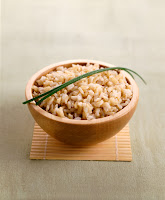Excuses:
1) It's too cold outside.
Just because the days are getting shorter, and the temperature is dropping does not mean we should all be running indoors to complete our fitness routine. Keeping your fitness goals in the great outdoors is actually still a great alternative to the gym during the colder season, and gets you that much needed fresh air! Just remember to dress warmly, wear layers, and cover your hands, feet, and ears. Jogging, cycling, brisk walks, and even Boot Camp are all excellent outdoor sports.
2) No Really, the weather is too bad.
If the weather is truly unbearable, or you have a medical condition where you can be active in the cold, then get your butt to the gym. Keep your fitness levels up during the dreary winter months is very important because it can ward off depression, winter blues, anxiety, stress, extra weight gain do to a sedentary lifestyle.
Get out and shovel the driveway, make a snow man, go skiing, hit up the hockey rink for some triple sow-cows. There are plenty of things to keep you busy and active in the winter. No excuses!
3) Holiday stress is normal.
Unfortunately, 'tis the season for holiday stress - between money woes, countless parties and simply trying to make everyone happy, sometimes November and December can bring more anxiety than joy.
While much of those feelings are probably situational, be mindful of how you're feeling - if stress starts to interfere with your sleep, or if you're experiencing physical symptoms such as neck pain, back pain or indigestion, speak to your doctor.
4) It's ok to have treats, it's the holidays.
That may be true to a certain extent -- but adopting that mantra for two solid months can lead to permanent weight gain. Enjoy in moderation, and add healthy holiday treats to your regular diet.
5) 'Comfort Foods' and winter go hand-in-hand.
Creamy soups, mashed potatoes and a slice of pie have a way of warming you from the inside out on a cold winter day - but those extra calories can be enough to give you more than a chill!
Try some simple recipe modifications. Swap out a cup of plain Greek yogurt for recipes that call for a cup of sour cream, cream cheese or mayonnaise - you can also go half Greek yogurt/half heavy cream for those that call for straight heavy cream.
6) It's hard to find fresh in-season produce.
Think again. Oranges, pears, apples, sweet potatoes, turnips, grapefruit, kale, broccoli and squash are colorful, in-season produce because they are shipped from warmer climates where they
are in season.
7) I'll indulge now, and lose the weight in the New Year.
Some studies show that the weight we gain over the holidays is more likely to say on us throughout the new year. Make sensible eating choices so that you don't have to worry about loosing a ton of weight when January 1 comes around.
8) It's dark when I get home. Who wants to workout in the dark?
If it's at all possible, get your workout done and out of the way first thing in the morning. That's how we were meant to function. And capturing that morning sunlight - now that Daylight Savings Time has ended and the sunrise happens earlier - can boost mood for the whole day.
And if it's truly impossible to fit in a morning workout, be mindful of how that lack of light can affect your mood, health and energy (including later in the day when you don't feel like working out anymore).






























